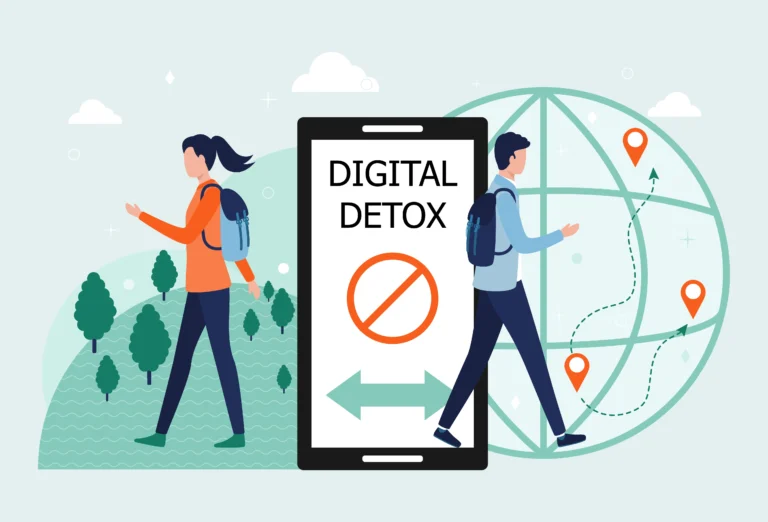E-commerce in 2024: How to Stay Competitive in a Saturated Market
In 2024, there will be greater competition than ever in the e-commerce market. In a crowded market where multiple companies are fighting for consumers’ attention, standing out demands creative thinking and a thorough grasp of new trends. In order to keep your company ahead of the curve, this blog examines the newest e-commerce trends, such as personalization, omnichannel tactics, and client retention strategies.

1. Leverage advanced personalization
- Dynamic Content and Suggestions: Customize every aspect of the client experience with AI-powered algorithms. Customize content for each customer’s preferences, from landing pages and email templates to product recommendations. This improves consumer happiness and raises the possibility of conversions.
- Behavioral Segmentation: Using behavioral segmentation, you may divide up your clientele according to things like their browsing habits, buying tendencies, and level of interaction with your business. This enables you to send offers and communications that are more specifically targeted, which can greatly increase engagement and sales.
2. Adopt Omnichannel Strategies
- Unified Customer Experience: Make sure that your messaging, branding, and overall customer experience are the same on all of your platforms. Customers should receive the same level of quality and service whether they shop in person, online, or on a mobile device.
- Seamless Channel Integration: Creating a seamless purchasing experience requires integrating your offline and online platforms. For instance, make it simple for customers to return things across all channels and let them check product availability online and reserve items for in-store pickup.
3. Enhance customer retention efforts
- Loyalty Programs: Create and advertise loyalty programs that give customers rewards for making recurrent purchases. Provide special discounts, first access to new items, or reward-redeemable points. Programs for customer loyalty can boost the lifetime value of a customer and promote repeat business.
- Subscription Services: Provide subscription options for goods like consumables that consumers frequently buy. Customers find subscriptions convenient, and as a business, they offer a steady source of income.
4. Utilize data-driven decision-making.
- Customer data analytics: Gather and examine information from consumer interactions to learn about their preferences, buying patterns, and problems. Make use of this information to improve your customer service programs, marketing plans, and product offerings.
- Predictive Analytics: Utilize predictive analytics techniques to make predictions about future trends and consumer behavior. This enables you to forecast demand and remain ahead of competition by making proactive adjustments to your pricing plans, marketing campaigns, and inventories.
5. Prioritize mobile optimization
- Responsive Design: Make sure your website is completely mobile-friendly using responsive design. Because mobile devices account for the majority of online buyers, having an adaptable design that provides a seamless and easy-to-use purchasing experience is essential.
- Mobile Payment choices: To improve the checkout process and offer convenience, provide a range of mobile payment choices, such as digital wallets like Apple Pay and Google Pay. This can boost mobile conversions and lower cart abandonment rates.

6. Invest in Sustainable Practices
- Eco-Friendly Packaging: As part of your brand’s dedication to environmental responsibility, provide sustainable packaging solutions and encourage their use. Emphasize these initiatives in your marketing collateral to attract environmentally conscious customers.
- Shipping that is Carbon Neutral: Collaborate with logistics companies that provide shipping solutions that are carbon neutral or make an investment to offset the carbon emissions from your deliveries. This is beneficial to the environment and appeals to those that value sustainability.
7. Focus on exceptional customer service.
- AI-Powered Chatbots: Use chatbots with AI to offer immediate customer service. By processing purchases, responding to frequently asked questions, and making product recommendations, these chatbots enhance customer satisfaction while lightening the strain on your support staff.
- 24/7 Customer Support: Provide customers with round-the-clock assistance to meet their needs whenever they arise. Providing prompt and effective assistance can greatly increase client satisfaction and loyalty.
8. Create engaging content.
- Interactive Content: Create engaging and customized experiences for customers with interactive content like polls, quizzes, and product configurators. Engaging customers with interactive content can lengthen their stay on your website and foster more meaningful interactions with your business.
- User-generated Content: Invite clients to post about their interactions with your goods on social media, and then showcase their work on your website. User-generated content increases credibility and trustworthiness, which helps prospective buyers relate to your business better.
9. Optimize for Voice Search
- Voice Search-Friendly material: Make sure your material is optimized for voice queries as voice search usage grows. This entails speaking more naturally, utilizing long-tail keywords, and providing succinct, conversational answers to frequently asked client questions.
- Voice-Activated Shopping: Look into how you may incorporate voice-activated shopping features into your website. Offering voice-based shopping can give a competitive edge as voice assistants and smart speakers proliferate.

10. Monitor and adapt to market changes
- Keep Up with developments: Keep a close eye on consumer preferences, rival activity, and industry developments. Because the e-commerce industry is changing so quickly, it’s important to stay updated so you can swiftly adjust your plans and stay competitive.
- Strategies for Agile Marketing: Create flexible marketing plans that you may modify to meet shifting market demands. This entails being able to quickly introduce fresh initiatives, change the direction of your messaging, or concentrate on fresh prospects as they present themselves.
Conclusion
A proactive, data-driven approach that prioritizes personalization, multichannel tactics, client retention, sustainability, and constant adaptation is necessary to be successful in the crowded e-commerce market of 2024. With the help of these ten comprehensive methods, your company can prosper and make a name for itself in the congested e-commerce market.
FAQs
Q1: Why is personalization important in e-commerce?
By responding to each customer’s unique tastes, personalization improves the purchasing experience and increases consumer loyalty, engagement, and conversions.
Q2: What are omnichannel strategies?
In order to guarantee standardized brand encounters, omnichannel strategies entail establishing a smooth online, mobile, and in-store buying experience.
Q3: How can I retain customers in a competitive market?
To attract and maintain customers, introduce reward programs, provide subscription services, and deliver top-notch customer support.
Q4: How does data analytics improve e-commerce performance?
By giving you insights into consumer behavior and company performance, data analytics enables you to optimize your e-commerce tactics and make well-informed decisions.
Q5: What role does sustainability play in e-commerce?
Consumers are becoming more and more concerned about sustainability, so differentiating your business and drawing in eco-aware clients can help.







